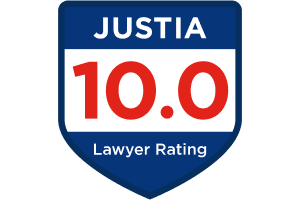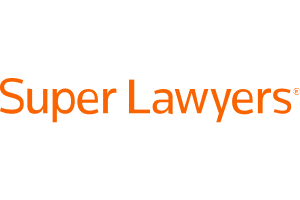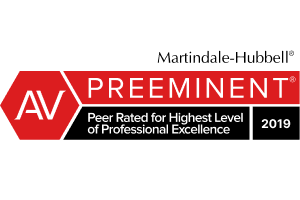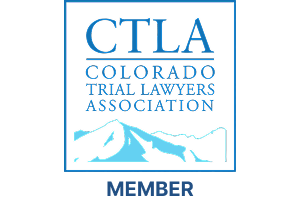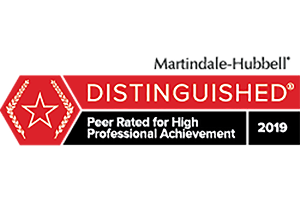T-Bone Truck Accidents
T-bone truck crashes, sometimes called right-angle or broadside collisions, are among the most dangerous roadway events. In a T-bone, the front of one vehicle strikes the side of another at or near a ninety-degree angle. When the striking vehicle is a tractor trailer or other heavy commercial truck, the mismatch in mass and ride height exposes the people in the struck vehicle to direct intrusion, sudden lateral acceleration, and violent rotational forces. Side structures on passenger vehicles have improved over the years, yet they remain thinner than front structures and offer less crush space. That is why these collisions produce a high rate of severe injuries and fatalities. At Cook Bradford & Levy, led by trial lawyers Jason Levy and Brian Bradford, we investigate T-bone truck crashes with urgency, gather the technical and documentary proof that shows how and why they happened, and build each case for trial from the start.
How T-Bone Truck Crashes Happen?
Most T-bone collisions occur at intersections, driveways, and access points where traffic flows cross. A professional driver must perceive the intersection environment early, slow to an appropriate approach speed, and confirm that cross traffic is controlled or clear. Failure at any step can lead to a right-angle impact. Common patterns include a truck driver running a red light, rolling a stop sign, misjudging a left turn gap, failing to yield when exiting a driveway, or accelerating through a stale yellow while cross traffic starts on green. Limited sight lines, obstructed signals, poor conspicuity at night, and confusing temporary traffic control around road work can make the situation worse. Wet or icy pavement lengthens stopping distances. Distracted driving, whether from a mobile phone, dispatch messages, or in-cab systems, reduces the time available to see and react. Fatigue slows the decision process and leads to risky gap acceptance during left turns. When a heavy truck enters the conflict zone late or too fast, smaller vehicles have very little time to avoid the impact.
Why These Impacts are Especially Severe?
A right-angle crash strikes where passenger vehicles are most vulnerable. Side airbags and reinforced B-pillars help, but the occupant is much closer to the striking front structure of a tractor or straight truck than in a head-on impact. Side intrusions cause chest, abdominal, and pelvic injuries. Lateral whiplash can produce brain injury even without a direct head strike. If the point of impact is slightly rearward, the struck vehicle can spin and be hit again by the trailer or by other traffic. If the striking height is above the beltline, window frames and roof rails can deform, increasing the risk of head trauma. For vulnerable road users such as cyclists or motorcyclists entering an intersection, a perpendicular strike can be catastrophic even at moderate speeds.
Rules and Standards that Frame Liability
The basic duty to yield
Most T-bone cases start with simple rules of the road. A driver facing a steady red signal must stop. A driver turning left must yield to oncoming traffic that is close enough to be a hazard. A driver emerging from a private drive must yield to traffic on the roadway. Professional truck drivers have the same obligations as everyone else, and in many contexts a higher standard of care is expected because of the size and danger of the vehicle they operate. In Colorado, a violation of a traffic safety statute can support negligence per se when the law was intended to protect the class of persons harmed and the violation caused the type of injury the law sought to prevent. That principle gives juries a clear way to evaluate red light, stop sign, and failure to yield cases.
Federal Motor Carrier Safety Regulations
The Federal Motor Carrier Safety Regulations set out specific duties for motor carriers and their drivers that frequently matter in a T-bone crash. Section 392.2 requires drivers to comply with state and local traffic laws. Section 392.3 prohibits operating a commercial motor vehicle when a driver is too fatigued or ill to be safe. Section 392.80 and related provisions restrict the use of handheld mobile phones while driving. Hours-of-service limits in Part 395 are designed to reduce fatigue that impairs perception and reaction time. Part 396 requires systematic inspection, repair, and maintenance of key safety systems, including brakes, steering, and lighting. When a right-angle collision involves a truck that entered on a late yellow without adequate braking, or a driver who failed to see a red signal, fatigue, distraction, and equipment condition are natural areas for investigation.
Signal timing, conspicuity, and work zones
Some T-bone collisions involve unusual intersection timing or temporary traffic control for construction. Trucks require longer distances to stop and more time to clear an intersection. If signal timing is short, or if the yellow interval is improperly set for a steep grade or high approach speed, a truck may find itself committed to the intersection as cross traffic starts. Work zones can complicate sight lines and signage. These factors do not excuse a professional driver from the duty to approach cautiously, but they can help explain why the crash happened and whether others share responsibility. Expert analysis of signal timing plans, loop detector data, and temporary traffic control logs can be critical.
Injuries and Damages in a T-bone Crash
Right-angle impacts produce a characteristic pattern of injuries. Occupants on the struck side sustain rib and pelvic fractures, lung contusions, lacerations of the liver or spleen, and fractures of the upper extremities as they brace for impact. Brain injuries are common because lateral acceleration and rotational forces strain delicate neural structures. Seat belts help, yet occupants can still contact side structures with significant force. Children in the rear seat may be closer to the intrusion path, which is why pediatric injuries in T-bones require careful attention. Survivors often need surgery, extended hospitalization, and months of rehabilitation. Chronic pain and post-traumatic stress symptoms are not unusual. In fatal cases, families face funeral expenses, loss of income and benefits, and the irreplaceable loss of guidance and companionship.
Colorado law allows recovery of both economic and noneconomic damages, and in appropriate cases exemplary damages may be available where the evidence shows fraud, malice, or willful and wanton conduct. We work with treating physicians, independent specialists, life care planners, vocational experts, and economists to present a complete and credible picture of harm. Our goal is to replace speculation with evidence, then translate that evidence into plain language that shows the full human impact of the crash.
How Cook Bradford & Levy Moves Your Case Forward?
We are a trial-ready firm that focuses on careful preparation and clear communication. From the outset, we explain the process, listen to your priorities, and map the path forward. We investigate comprehensively, not just for settlement but for trial. Our demand packages include crash reconstruction exhibits, component photographs, signal timing analyses, and medical documentation arranged so that the story of responsibility and harm is easy to follow. Insurers evaluate risk, and a well-built case changes their evaluation. When negotiations are not fair, we file suit, conduct targeted discovery, and prepare the case for a jury. Jason Levy and Brian Bradford have represented injured Coloradans for years, and our team brings the same energy to negotiation that we bring to the courtroom.
Steps After a T-bone Truck Crash
Seek medical care immediately, even if symptoms seem minor. Many serious injuries, especially brain injuries, are not obvious at first. Keep copies of discharge instructions, prescriptions, and imaging. If you can safely do so, take photographs of the intersection, signal heads, lane markings, and vehicle damage. Do not discuss the crash with insurance adjusters before you understand your rights. Contact counsel quickly so that the truck, its electronic data, and any camera footage are preserved. Short retention policies and routine repairs can erase critical proof if action is delayed.
Frequently Asked Questions
Is a T-bone collision automatically the truck driver’s fault?
No. Every case depends on the facts. That said, professional drivers have clear duties at intersections. If a truck entered on red, failed to yield on a left turn, or rolled a stop sign, those facts will usually establish negligence. Comparative negligence may reduce damages if another driver also made an error, but it does not absolve a professional from violating basic rules of the road.
What if the other driver says the light was green too?
Objective data often resolves signal disputes. Traffic cameras, dash cameras, and signal controller logs can confirm who had the right of way. Electronic control modules and telematics show approach speed, throttle position, and braking. Together, they paint a clear picture of what happened in the moments before impact.
Do I have a claim if the trucking company followed federal rules?
Compliance with a minimum standard does not end the legal analysis. Courts allow state law negligence claims to proceed even when equipment or training met a federal baseline, so long as the plaintiff proves that the driver or carrier failed to use reasonable care in the real world. Evidence of fatigue, distraction, poor maintenance, or unsafe scheduling can support liability despite technical compliance.
How long do I have to act?
Colorado law imposes deadlines for filing personal injury and wrongful death claims. Evidence is also time sensitive. Electronic data can be overwritten. Cameras can delete files in days. Trucks can be repaired or salvaged. Contacting a lawyer promptly protects your ability to prove what happened and why.
What compensation is available?
You may recover medical expenses, lost wages, loss of earning capacity, and the costs of future care. Noneconomic damages compensate for pain, suffering, inconvenience, and loss of enjoyment of life. In appropriate cases, exemplary damages may be awarded to punish and deter egregious conduct. Each case is unique, and careful documentation is essential.
The Cook Bradford & Levy Difference
When a semi-truck barrels through an intersection and strikes broadside, the aftermath is devastating. These collisions require a law firm that can respond immediately, think analytically, and tell your story clearly. Cook Bradford & Levy combines speed, precision, and experience in the field of complex truck litigation. From the first call, we move to secure traffic-signal data, download electronic control modules, and preserve witness testimony before it disappears.
Our attorneys, Jason Levy and Brian Bradford, are trial lawyers who know how to turn forensic data and crash-reconstruction science into a compelling human narrative. We don’t represent insurance carriers or trucking corporations — only people and families who have been forced to rebuild their lives after catastrophic impact. Every client receives direct communication, detailed investigation, and strategic preparation aimed at the best possible resolution, whether through negotiation or trial.
If you or someone close to you has suffered injuries in a T-bone truck collision, contact Cook Bradford & Levy today. We will listen carefully, outline your legal options, and begin building the case for full accountability and fair compensation. Your recovery starts with action; and we are ready to take it.


